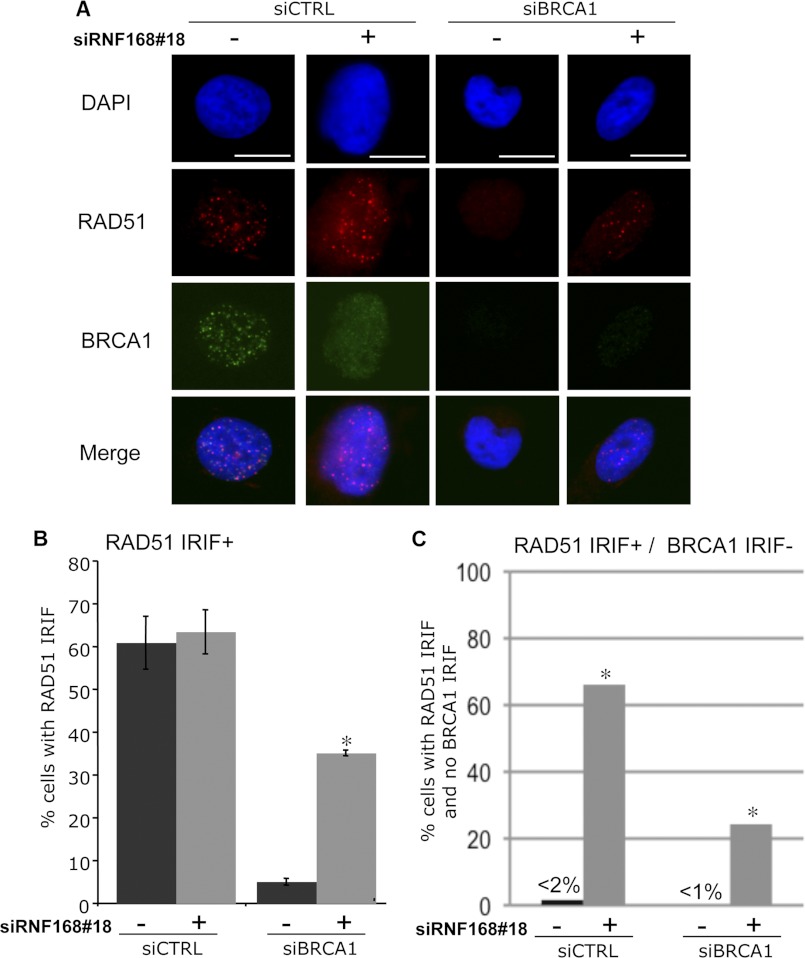FIGURE 3.
RNF168-depleted cells show a diminished requirement for BRCA1 in formation of RAD51 IRIF. U2OS cells were treated with siRNAs as in Fig. 2, cultured for 2 days, treated with 6 Gy of IR (Cs137), and allowed to recover for 4 h prior to pre-extraction, fixation, and immunostaining with RAD51 antibodies, or co-staining with antibodies against RAD51 and BRCA1. Cells with ≥5 RAD51 foci were scored as RAD51 IRIF+, and cells with <5 BRCA1 foci were scored as BRCA1 IRIF−. A, shown are DAPI, RAD51 immunostaining, and BRCA1 immunostaining signals for an siCTRL cell that is RAD51 IRIF+/BRCA1 IRIF+, an siBRCA1 cell that is RAD51 IRIF−/BRCA1 IRIF−, and siRNF168#18 and both siBRCA1 and siRNF168#18 cells that are RAD51 IRIF+/BRCA1 IRIF−. Bars, 10 μm. B, depletion of RNF168 suppresses the RAD51 IRIF defect caused by BRCA1 silencing. Shown are the frequencies of cells with ≥5 RAD51 foci (RAD51 IRIF+) for each of the siRNA treatments shown in A. *, p < 0.0001 versus the parallel (−) siRNF168 condition (n ≥ 3). C, RNF168-depleted cells can form RAD51 IRIF without BRCA1 IRIF, which is uncommon in control cells. Shown are the frequencies of cells with ≥5 RAD51 foci and <5 BRCA1 foci (RAD51 IRIF+/BRCA1 IRIF−) for each of the siRNA treatments shown in A. *, p < 0.0001 versus the (−) parallel siRNF168 condition using Fisher's exact test.

